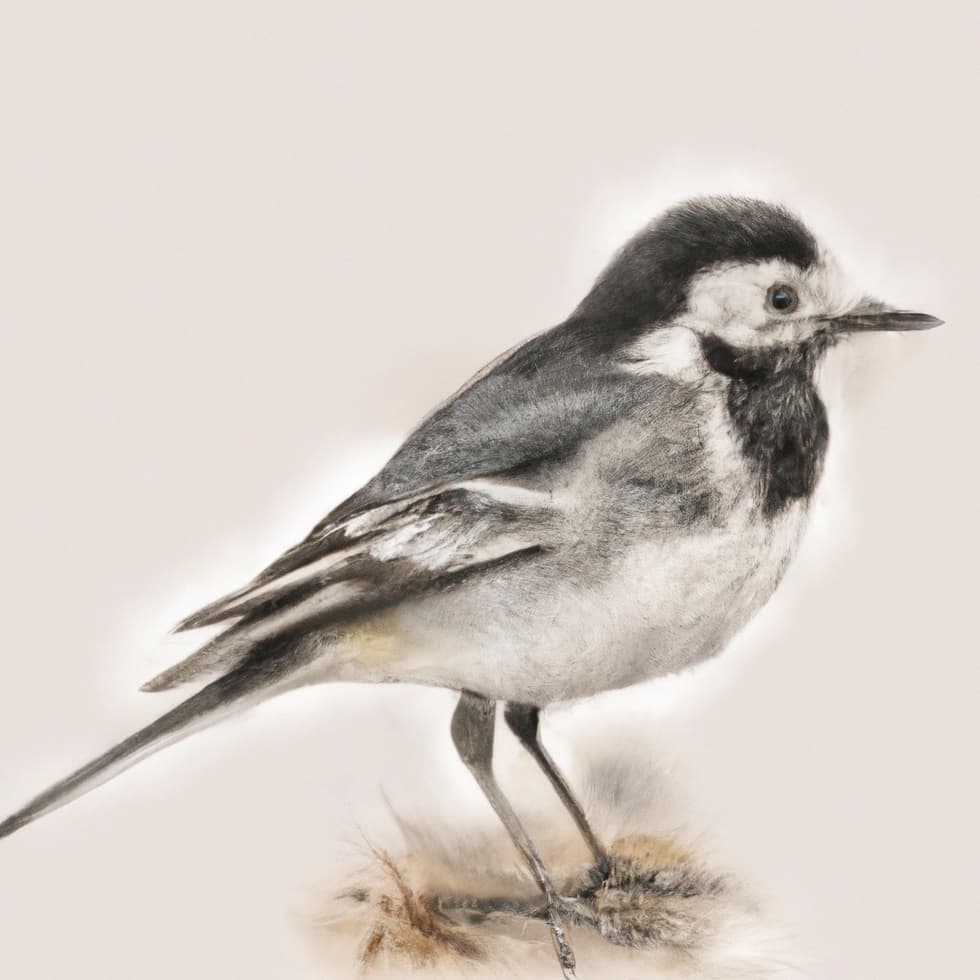
The Pied Wagtail is a charming and distinctive species of bird that is known for its lively and energetic behaviour, as well as its striking black and white plumage. In this blog, we’ll take a closer look at 27 curious facts about the Pied Wagtail and discover why this remarkable bird is such a beloved and treasured species.
27 Curious Facts about the Pied Wagtail
- The Pied Wagtail is a small species of passerine bird that is native to Europe and Asia.
- The scientific name for the Pied Wagtail is Motacilla alba.
- They are known for their distinctive black and white plumage, which includes a black throat and white belly.
- Pied Wagtails are often found in urban and suburban environments, where they feed on insects and small invertebrates.
- They are able to run and walk quickly along the ground and are known for their distinctive tail-wagging behaviour.
- Pied Wagtails are social birds and will often gather in flocks during the winter months.
- They are able to breed throughout much of the year and will often produce multiple broods in a single year.
- Pied Wagtails are able to adapt to a wide range of habitats, including urban areas, farmland, and wetlands.
- They are able to migrate short distances during the winter months to find suitable food and habitat.
- They are vulnerable to predation by a wide range of animals, including cats, birds of prey, and other predators.
- Pied Wagtails have a distinctive call that is often described as a high-pitched and musical sound.
- They are able to communicate with other members of their species using a range of vocalisations and body language.
- Pied Wagtails have a unique digestive system that allows them to extract nutrients from tough insect exoskeletons.
- They play an important role in the ecosystem as insect predators and as prey for other animals.
- Pied Wagtails have been used in literature and art for centuries as a symbol of grace and elegance.
- They are able to recognise and respond to the calls of other birds and may use calls to establish territories and attract mates.
- Pied Wagtails are able to recover from significant declines in population and have rebounded in many areas due to conservation efforts.
- They have lively and energetic behaviour, and are a joy to observe in their natural habitat.
- Pied Wagtails are popular among birdwatchers and nature lovers, and their distinctive black and white plumage continues to capture the imagination of people around the world.
- They have a unique tail-wagging behaviour that is sure to capture the hearts and minds of anyone who observes them.
- Pied Wagtails are popular in urban and suburban environments, where they can often be seen foraging for food on sidewalks and in parking lots.
- They are able to adapt to a wide range of environmental conditions and are able to survive in areas with limited resources.
- Pied Wagtails are a beloved species among birdwatchers and nature lovers, and their unique characteristics continue to inspire wonder and curiosity.
- They are able to recover from significant declines in population and have rebounded in many areas due to conservation efforts.
- The recovery of Pied Wagtails in many areas is a testament to the power of conservation and the importance of protecting our natural world.
- The Pied Wagtail is a remarkable and treasured species that has captured the hearts and minds of people around the world.
- With their distinctive appearance, lively behaviour, and important role in the ecosystem, Pied Wagtails truly are a treasure of the bird world.
Where to Find the Pied Wagtail
Pied Wagtails are native to Europe and Asia and are often found in urban and suburban environments, where they feed on insects and small invertebrates. They can also be found in farmland and wetland habitats, where they may feed on aquatic insects and other prey. During winter, Pied Wagtails may migrate short distances to find suitable food and habitat.
Feeding the Pied Wagtail
Pied Wagtails are primarily insectivorous and will feed on a wide range of small invertebrates, including flies, beetles, and spiders. They may also feed on small seeds and berries during the winter months. In urban environments, they can often be seen foraging insects on sidewalks and in parking lots.
Final Thoughts
The Pied Wagtail is a charming and beloved species that is sure to capture the hearts and minds of anyone who observes them. With their distinctive black and white plumage, lively behaviour, and important role in the ecosystem, Pied Wagtails are a treasured part of the bird world. Whether you are a seasoned birder or simply appreciate the natural world, the Pied Wagtail is a species that is worth seeking out. So why not take a moment to observe these amazing birds in their natural habitat and perhaps even support their conservation through local conservation efforts? With their important role in the ecosystem and their remarkable characteristics, Pied Wagtails truly are a treasure of the bird world.